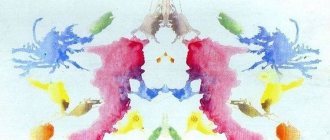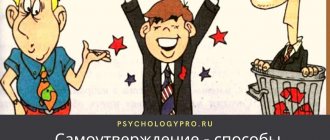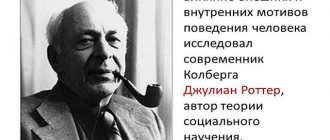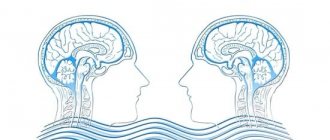Association. The famous Italian writer Gianni Rodari compared the spoken word to a stone thrown into a pond. The circles diverging from it not only stirred up the water, they made completely unrelated objects move in the same rhythm: an autumn leaf on the water, a reed, a fisherman’s float, a water lily. The word we hear causes similar waves. Only these are waves of excitation diverging in the cerebral cortex. They involve thoughts, images, memories into movement. This is the process of the birth of associations, which play a very important role in the human psyche.
Associations from a psychological point of view
The concept of “association” was introduced by the English philosopher of the 17th century J. Locke, but the phenomenon itself has been known since Antiquity and was described by Plato and Aristotle.
Association as connection
Communication is how this concept is translated from Latin. It has many meanings, but in psychology this term refers to a spontaneous connection that occurs in the human brain between objects, phenomena of reality, memories and imaginary images. That is, such connections are caused by both external stimuli (words, smells, visual images, sounds, etc.) and information stored in memory.
The stimulus for the emergence of associations can also be internal processes in our organs. For example, heaviness in the stomach and heartburn instantly cause an association with a piece of fried fatty meat eaten at lunch.
Even your own thoughts can literally provoke a fan of associations. I think each of us has found ourselves in a situation where some random thought pulled out from the depths of our consciousness another thought that seemed unrelated to it. And that, in turn, grabbed a third, a fourth... And after some time we asked ourselves in surprise how our thoughts got here, why suddenly seemingly long-forgotten images were spinning in our heads.
Association
Psychophysiological mechanism of associations
The basis of associations is a conditioned reflex reaction. Any sufficiently strong stimulus (word, image, smell, sound, thought) causes a focus of excitation in the cerebral cortex. This excitation along the nerve fibers from one neuron to another spreads in breadth and depth. Waves of excitation also capture new areas of the cortex, activate traces of previous foci of excitation, and evoke images, feelings, and ideas from memory. They are included in the thinking process and update new and new images.
The famous English creativity researcher T. Buzan compared associative thinking with fireworks. First, one sparkle-thought takes off, which explodes into dozens of new ones, and they, in turn, scatter in a fan of fiery splashes, covering the entire sky with a shining ball.
The process of creating associations is very important for the normal functioning of consciousness, for the effectiveness of our thinking and depends on the following factors:
- The speed of nervous processes, which also determines the speed of reflex reactions. This means the time and area of propagation of the nerve impulse. The higher the speed, the faster and more diverse associations arise.
- Memory and information stored in it. The more extensive and varied our knowledge, the richer the associations and, accordingly, the more original the products of thinking.
- Imagination. In the process of birth of associations, emerging images can be processed, transformed, and their elements can be combined in new combinations. This is how the imagination works, and the new images it creates enrich our memory and participate in thinking.
- The area of the subconscious. Associative processes, which are based on the spontaneous spread of excitation in the cerebral cortex, spreading deeper, connect the level of the subconscious to thinking. Since a huge amount of information that we are not conscious of is stored there, and there is no targeted access to it, associations are one of the few channels of communication with this mysterious level of the psyche.
Associations are individual in nature, as they are associated with experience and information stored in a person’s memory. However, there are also stable connections that are inherent in many people due to their common experience, interests, professional activities, etc. There is an interesting example or a kind of test. What association do you have with the word “undead”? Some people associate this concept with a gentle, affectionate attitude. And for those who are fond of books and films in the genre of mysticism and fantasy - with terrible supernatural creatures. There are even more universal associations, for example, snow in people’s minds is associated with winter, heat with summer, falling leaves with autumn.
Basic concept
If we bring together the ideas of all researchers in this direction, we can highlight the key principles of associative psychology:
- The soul was called and understood by researchers as consciousness. This was the first attempt to break away from the influence of theology on science and look at mental processes from a different angle.
- Our mental life is based on simple elements - these are sensations. They are basic and paramount.
- The researchers included feelings, thinking and ideas as secondary elements.
- According to the principle of associations, primary sensations are formed into secondary elements, i.e. the complex consists of a collection of simple elements.
- The more often an association is repeated, the more firmly it becomes entrenched in the psyche. It must be said that the frequency of repetition of associations is associated with emotional experiences, since they are the main stimulus for repetition, because the stronger the emotion, the stronger the connection will be.
Generally speaking, the associative theory of thinking reduced the entire thought process to the emergence of associative connections.
Unfortunately, this theory could not explain such a process as creativity, calling it an innate, original function of thinking, although later researchers proved that this function is not innate. The main and most noticeable limitation of this direction was the use of the method of introspection, or self-observation. Most of the conclusions were made by scientists based on an analysis of their consciousness and the processes that take place in it, while their assessment was given exclusively subjectively, which means it could not be extended to other people.
It must be said that in the 20th century this theory became obsolete and was replaced by new directions. But the concept of associations, which was introduced by these scientists, entered psychological science and is actively used to this day. For example, an association experiment was created based on this concept.
Types of associations
The first known classification of associations was created by Aristotle, and we still use it. The ancient philosopher identified three types of connections:
- By similarity. In order for this connection to arise between two objects or phenomena in the human brain, they must be similar in some way: appearance, color, emotional impact, etc. Thus, the number 2 is associated with a goose, the sky with the ocean , and a snowy plain with a white sheet.
- By contiguity. This common type of connection occurs when we frequently perceive some objects at the same time. For example, the smell of pies can cause an association with home, with childhood, with an affectionate grandmother; the sound of the surf means happy holidays, and the aroma of tangerines and pine needles means happy New Year. This type also includes verbal associations born from set expressions. For example, in response to the word “willow”, many people will think of “weeping”, birch - white-trunked, oak - mighty, etc. But an association by contiguity can also reflect the presence of a real connection or interaction between objects. Thus, a hat is associated with the head, a cart with a horse, and the moon with the night.
- By contrast. This is the most complex type of association, difficult to explain. The image that appears in the mind causes an association with its opposite in meaning. So, if you say the word “day,” most people will remember night. Summer - winter, heat - cold. Such associations are the source of interesting vivid metaphors, for example comparing snowflakes to sparks.
Later, Aristotle's classification was supplemented by one more type. Associations by meaning are the result of the analysis of information and the emergence of complex logical and semantic connections in the human brain. They are largely individual and determined by personal experience, but there are also ones that are understandable to most people. For example, rain means a runny nose, the sea means an airplane. It is not difficult to establish a semantic connection between them.
Namespace
There are well-established connections that are inherent in society and the linguistic environment. These images include the name space. Most of the modern names have ancient origins and are therefore associated with their original meaning.
In national cultures, names are often associated with a certain character trait (or appearance).
An example in Russian culture is the name Catherine; the word, due to the historical characteristics of the country’s development, receives a connection with “great” and with the original meaning “immaculate.”
The perception of the estate is influenced by its famous bearers. A famous example of an association in space named after Louis “the Sun” XIV is the French king. The rulers of the dynasty received this name over several centuries. Because of this, when many people mention the name, they associate it with royal attributes, Paris, France.
Many cultures have their own list of “unlucky names.” For example, these are the names of Christian martyrs - Tatyana, Fedor (although this tradition was not very widespread in Rus'). Such lists create negative associations that can spread and strengthen, deliberately predetermining the negative connotation of emerging connections.
A name space is a conditional set of generally accepted associations that can be positive or negative. This area is influenced by known bearers of a particular name.
Psychodiagnostic methods using associations
Since the beginning of the 20th century, connections spontaneously arising in the cerebral cortex have been used by psychologists to diagnose human mental states. S. Freud was the first to draw attention to the connection between free associations and processes occurring at the level of the unconscious. According to his theory, at this deep level of the psyche there are instincts and desires suppressed by a person, which contradict the requirements of society.
But having driven these forbidden desires into the far corner of the unconscious, a person did not get rid of them. They continue to influence his behavior, provoke phobias or strange behavior, and even cause mental disorders and organic diseases.
Free association method
Associations that arise involuntarily carry information about these suppressed desires and instincts, which allows a psychologist or psychiatrist to make a diagnosis. For this, S. Freud developed and began to use the method of free association, which to this day is one of the main ones in psychoanalysis.
The principle of this method is very simple. Having assumed a comfortable position and relaxed, the patient should simply say whatever comes to his mind. He can talk about his problems, or he can simply reflect on the meaning of life or discuss his colleagues. You need not to control, not to analyze, not to choose the right words, but to speak freely.
The patient’s thoughts and words themselves evoke different associations in his mind, generating a new stream of speech activity and pulling out from the unconscious what is hidden there and interferes with life. But the psychoanalyst must recognize the connection between individual phrases, words, and reservations of the patient and his psychological problems and complexes, identify these problems and reveal their essence to the client.
Variety of association methods
Currently, associative thinking is used in many psychodiagnostic techniques that make it possible to study the characteristics of an individual’s mental state, his problems, experiences and attitude towards others. Unlike Freud and his followers, representatives of other psychological movements prefer to use not free associations, but more organized and controlled by a psychotherapist. The methods are developed in such a way as to not only stimulate the emergence of associations, but also to be able to statistically process the results and compare them with data from other clients. All such diagnostic methods can be divided into three groups of tests:
- Based on verbal associations. In such tests, subjects are presented with a series of words or phrases, in response to which they must say the first thing that comes to mind. The very formulation, meaning, and scope of use of phrases are designed to reveal the internal problems of the person being diagnosed. One of the most popular such techniques is the “Paired Associations” test.
- Based on visual associations. Looking at the proposed pictures, often abstract, the client must say what they remind him of. The most famous of these techniques are the Rorschach Ink Blot Test and metaphorical cards.
- Based on the analysis of creative products. In order to study unconscious associations, the diagnosed person is asked to complete a creative task, for example, write an essay on a given topic or draw something. The creative process frees thinking and connects the subconscious to the process, which facilitates the birth of associations and opens access to archetype images, hidden desires and poorly understood problems.
Associative thinking is not only a source of important information about a person, it is a necessary condition for the intellectual and creative development of the individual.
Development of associative thinking
Ideas suggested by associations have been successfully used by people for a long time. Observations of fish gave rise to the idea of creating a submarine, and the ascent and submersion systems were inspired by associations with the air bladder of a fish. The idea of echolocation was borrowed from dolphins. The burdock clinging to the dog's fur suggested to Georges de Menstral, an engineer from Switzerland, the principle of creating Velcro, which is now widely used in clothing and shoes. Many unrealized ideas suggested by associations were preserved in the notebooks of Leonardo Da Vinci. Thus, bird observations suggested to him the idea of an ornithopter, which would allow a person to soar above the ground. His sketches of a parachute are a reflection of the dream of a flying man, drifting in the heights, not afraid to fall from any height. And this is only a tiny part of the ideas inspired by associations, and the main thing is that this process cannot be stopped.
Developed associative thinking gives us a number of advantages:
- promotes the development of imagination;
- helps generate new, extraordinary ideas;
- facilitates perception and promotes the formation of new semantic connections;
- improves adaptation to new, non-standard situations and helps in finding solutions to unusual problems;
- stimulates brain function;
- improves memory capacity.
It is impossible not to mention that the basis of mnemonics, which allows you to memorize large volumes of words, are associations. You can learn more about associative memory in our article Associative Memory. Development of associative memory.
It is better to begin the development of associative thinking from early childhood, step by step. First, you just need to introduce the child to all the concepts encountered and the actions associated with them. The next stage is teaching the child to generalize. For example, cups, plates, saucers - dishes; chair, table, armchair - furniture; car, doll, cubes - toys. At the same time, the child learns to name and distinguish objects.
For older children, other, more complex exercises are needed: drawing up associative series, searching for a sequence in a word series, analyzing objects by attribute.
A child’s associative thinking can lead him to psychologically difficult situations. For a parent, in the case when a child reacts sharply negatively to an image or association (for example, vaccination - injection - doctor - white coat), it is important to understand that suppressed associations driven “into a dark corner” can cause the development of various kinds of complexes in the future. It is important to be patient, talk to your child about what scares him, explain, and be positive. You should listen to the child and his associations, try to understand his needs, images, aspirations in order to support the child, reassure him, and restore his sense of security.
Exercises for development
Thinking is a brain function that is subject to development and training. Systematic exercise improves the ability to think associatively. Children learn about their environment through associative thinking, which they need to further learn and perceive the world. It needs to be developed from infancy. A good associative thought process gives impetus to the emergence of original images and unusual ideas in children.
Kids easily generate new semantic connections. You can develop children's associative-figurative thinking in stages. First, the baby is introduced to objects and the actions associated with them. At the next stage, he is taught to generalize the concepts: dress, trousers, jacket, skirt - clothes; boots, sneakers, boots, slippers - footwear.
There are effective exercises. For example, a child is first asked about animals: what they do, what they eat, how they sleep and wash themselves. Then the child is offered to transform into a specific animal. Let the little man crawl on all fours, try to squeak, sniff and make sounds characteristic of this animal. A grown-up child must learn to make associative connections, find sequence in a series of words, and analyze objects based on their characteristics.
A negative reaction to associations can lead a child to develop various complexes. For example, negative emotions are caused by the associative series: injection - doctor - thermometer - vaccination. In such a situation, you need to set him up for the positive.
You need to patiently explain to the child that there is no need to be afraid of the injection, because it helps the person get rid of the disease. It is necessary to listen carefully to the baby’s associations, support him, reassure him and instill in him a sense of security.
In adults, associative series stimulate active thinking. Special training exercises help them remember new information better.
- You need to come up with 2 words that are logically unrelated to each other, and place associations between them, thus creating an associative chain. For example, “strawberries are money.” The following series may develop: strawberries - jam - store - seller - money.
- A long associative series is obtained by selecting an association for any word. For each subsequent word form, another associative word is selected. And this continues until the imagination runs out. All subsequent words must be somehow related to the initial unit of speech.
- You need to select two words, then find the associations that are common to them. For example, the words “berry”, “trees”, “grass”, “shrub”, “hazel”, “glade” are added to the concepts “green” and “forest”. Both originally intended definitions apply equally to any of these words.
- Searching for unusual associations is a great way to train mental activity. For example, everyone knows that printed publications are stored in a bookcase. Expected associations: encyclopedia, collections of poetry, magazines, fiction. But you can come up with an unusual range: plates, souvenirs, jewelry, toys, stationery, radio.
- It is recommended to mentally transform the scribbles depicted on the piece of paper into specific images. Droodle pictures are popular. They initially contain several options for perception, so there is the possibility of using multiple interpretations. Solving such pictures perfectly develops associative thinking.
- Group exercises involve coming up with concepts one by one while building an associative chain. Words can be selected thematically. The following task may involve indirect associations. After drawing up the chain, you need to conduct an analysis and exchange of opinions. All participants must explain why they said this particular word.
Such exercises help you understand your own emotions, experiences and fears.
Rules
When performing exercises, you must adhere to the following basic rules:
- associations should not be repeated, each word is used once during the game;
- it is necessary to search for original associations, therefore it is necessary to avoid template words and superficial concepts;
- during a hitch, you need to slowly say the previous word out loud, imagine an image and try to evoke associations through it;
- the search for associations must be accompanied by certain sensations in the body, since the bodily reaction contributes to the birth of the most interesting association.
Execution frequency
You need to exercise daily. Good results are obtained by performing various exercises from 1.5 to 2 hours a day. Start training gradually. At first, compiling associative series can take 20 minutes a day. Then the time increases.
Reorganization
The association may be reorganized into various forms of non-profit organizations.
When reorganizing this entity, all documents that are significant are transferred to the state, namely to the archives
If there are any, documents with information about personnel are also transferred to the state. When transferring documents, in which they will be stored must be met
The liquidation of an association occurs either by a court decision or by a decision of its members. In case of liquidation, a special commission is appointed, which sets deadlines and determines the procedure for liquidation.
Property
The association's property is formed from the proceeds of the founders, voluntary contributions and income received from securities, deposits and shares in which funds were previously invested.
Exercises for developing associative thinking
Want to try association games? This is the case when games develop:
- Take any two words that are not related in meaning, and try to gradually create a semantic associative chain leading from one to the other. For example: a car and a tree. The chain could be like this: car – road – forest – tree.
- Think of a few words (for example: bottle, beads, window). Choose association words for them that are similar in one or more characteristics (for example: glass, hard, sparkling, green).
- Choose associations that unite all the words at the same time. For example: cold, shiny - ice, diamond, metal.
- If you are on a walk or on the road, and you have a travel companion, come up with any first word and, in turn, lead a chain of associations from it. When an association is not clear, explain its appearance. It's fun, interesting and develops associative thinking.
- Come up with unusual associations. For example, wallet - money is a common, expected association. What else can you keep in your wallet? A lottery ticket, a lock of hair, an amulet, a note, a key?
- There is an interesting test that does not take much time, but allows you to play with associations and look into your subconscious and understand what is bothering you. This is the first step towards a solution, right? You can simply come up with 16 any words, or you can use auxiliary initial letters. But you shouldn’t think for a long time, you need to write the first thing that comes to mind and be honest with yourself (if your goal is to get to know yourself better and solve your problem). You can use nouns, adjectives, adverbs, phrases. So, if you decide to use letters (it’s easier to start with), take a piece of paper and write down the following letters vertically on the left: t, d, b, m, g, a, g, o, k, p, c, n, z , p, l, s. Now, opposite each of them, write a word starting with that letter - the first one that comes to mind. Now take the resulting words in pairs, selecting an association for every two consecutive words running vertically. Write down associations next to each pair of words. You will get 8 words. Then again, vertically from top to bottom, combine the two resulting words and again write down the emerging associations. Now there will be 4 of them. Combine them in pairs, write down two new associations. By combining them, you get the key association, the most important one. Associations helped in the study of the subconscious, they were used by S. Freud, then by C. Jung, and are still used by many psychoanalysts (and not only to this day). By using the creative component of your personality, during such a test you can look into your subconscious and find ways to solve the problem, if any. In any case, by putting associations and thoughts on paper, we subject them to analysis, look deeper into ourselves and understand better.
What it is?
The basis of associative thinking is the connection between concepts expressed in words. In this case, consciousness easily processes incoming information without the use of logical analysis. Perception of the world, generation of ideas and decision making are inextricably linked with associative thinking. Whether a person is well or poorly developed depends on attention, perception, memory and life experience.
During an acquaintance with a new phenomenon, object, or person, the individual’s brain begins to work intensely. A mental comparison with already familiar concepts occurs instantly, and specific associations arise. At the next meeting, recognition occurs with the help of previously built associative connections.
The more associations that come to mind, the easier it is to remember and reflect. The ability to think figuratively improves the quality of this process.
How does associative thinking work? Let's imagine this situation: for the first time seeing the northern lights in person, a person mentally compares it with fireworks, salutes or multi-colored lightning. He associates the slight crackling sound that accompanies this stunning spectacle with the crackling of wood in a village stove. And the timbre of a new acquaintance’s voice resembles the pleasant baritone of a colleague, the oval face of a neighbor, the gait of a childhood friend, the name and patronymic coincide with those of a famous writer.
Associative thinking gives a person a number of advantages. With his help:
- brain function is stimulated;
- memory is strengthened;
- imagination improves;
- an extraordinary fantasy is formed;
- the productivity of cognitive processes increases;
- the perception of new information is facilitated;
- adaptation to extraordinary situations and any life changes increases;
- voluntary attention develops;
- the search for solutions to non-standard problems is facilitated;
- new semantic connections are formed;
- unusual ideas are created;
- creative abilities are fully manifested.
Impaired associative thinking
Violations of associative thinking are expressed in changes in its pace, focus and harmony. Serious painful disorders of associative thinking are the subject of study in the literature on psychiatry and clinical psychology, in the section of psychopathology.
Some patterns of disturbances in the thought process were identified. Based on the symptoms of disorders, disorders are divided, for example, into form and content. In the first case, we are talking about violations of the associative process of thinking (the way a person thinks), and in the second - violations of judgment (what a person thinks, various kinds of obsessive states, delusions, super-black ideas). Below we will consider only some types of disorders of associative thinking:
1. By changing the pace of thinking:
- Acceleration, a noticeably faster pace of processing information, generating ideas, making decisions, and sometimes a leap of ideas. This acceleration is characteristic of manic states.
- Slowing down the pace, excessive delay in thinking and making decisions.
- An involuntary intrusion of thoughts (mentism), interfering with the thought process, leading off the topic.
- Stopping thinking is a break in the flow of thoughts, their involuntary stop.
2. By mobility, liveliness of the thinking process:
- An abundance of detail, minor details, unimportant to the topic.
- Excessive thoroughness, aggravating the previous point with unnecessary distracting associations and details.
- The viscosity of thoughts, in which thinking ceases to be productive, the thread of conversation is lost.
3. According to the grammatical structure of speech:
- The use of cliches, ready-made cliches, templates or questions when constructing an answer, that is, the use of speech stereotypes.
- Repeating meaningless words, sounds or phrases.
- Incoherent repetition of words or their combinations, in which there is no logical or grammatical structure.
4. By focus:
- Excessive ornateness when expressing a simple thought.
- Slipping off the topic into a lengthy discussion on an abstract association, followed by a return to the topic.
- Verbose empty and lengthy ranting without purpose, “about nothing” (reasoning).
- Directing efforts not at resolving the issue, but at executing the protocol (formalism).
- Consideration of an issue from different angles, with different evaluation criteria, changing levels of generalization, which makes it impossible to make a final decision (diversity).
- Fuzzy, contradictory use of concepts, when it is almost impossible to understand what is being said (amorphousness).
- Violations of the logic of thinking, in which either premises, or cause-and-effect relationships, or evidence suffer.
- Symbolism that is understandable only to the patient himself, and to no one else.
- Pathological finding of new meanings in words, based, for example, on the number of letters or on their rhyming with one or another (for example, “happy” or “unlucky”) word.
- Autistic thinking is one that concerns only the patient’s inner world, closed to outsiders.
- Archaic thinking - it is based on ancient stereotypes, judgments, views that are far from modernity.
- Perseveration (persistence, persistence) - in this case, a person persistently repeats words, phrases or deeds, even if the relevant context has already been exhausted.
- Discontinuity (lack of logical connection between concepts, judgments and conclusions), although the grammatical structure of speech may not be disrupted.
To keep the brain in good shape, the comprehensive development of its cognitive functions, such as attention, thinking, memory and perception, is important. To develop them, you can use regular classes with the help of exciting online games performed in the form of exercises for the development of thinking in adults.
We sincerely wish you a useful and exciting pastime and success in self-development!
Thinking
join the discussion
Share with your friends
Content
People have the ability, during the thought process when perceiving a concept, to actualize the involuntary appearance of another image. Mental association is the most important feature of the human mind.
Signs of violation
Scientists have identified some patterns of mental disorder. Violations in form are associated with a deviation in the associative process of thinking. Content violations include pathological judgments in the form of obsessions and delusions.
There are several types of disorders of this type of thinking.
- A change in the pace of the thought process can be associated with strong acceleration, noticeably faster than the speed of data processing, spasmodic generation of ideas and quick decision-making. Excessive acceleration is characteristic of manic states. In other cases, thinking can be very prolonged, and the event is thought about for a long time, the decision is made with difficulty. Sometimes extraneous thoughts involuntarily intrude and interfere with the normal thought process, leading astray from the desired topic. An unexpected stop in thinking may also occur, during which an involuntary break in current thoughts occurs.
- The mobility and liveliness of the thinking process can be complicated by an abundance of unnecessary minor details, clarification of the smallest details that are not essential for revealing the topic. The use of unnecessary, distracting associations interferes with normal thinking. The viscosity of thought leads to the loss of the essence of the conversation, the loss of its productivity.
- The grammatical construction of a text using stereotypical figures of speech, cliches, templates, and ready-made clichés deprives a person of the opportunity to think independently and expressively. The thought process is worsened by incoherent repetition of words, phrases, meaningless phrases and unnecessary sounds.
- Sometimes a failure occurs in the direction of goals. A person indulges in empty verbosity and begins an aimless rant. He can deviate from the topic, argue at length on an abstract association, then return again to the original postulate.
Some people present a simple idea in an overly ornate way. Sometimes the logic of thinking is violated or contradictory concepts are used.











